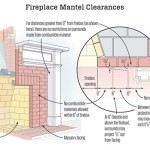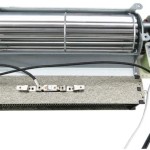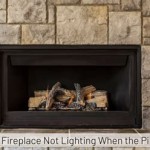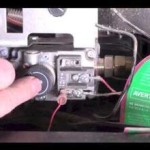Indoor Brick Fireplace Sealer: Protecting and Preserving Your Hearth
An indoor brick fireplace offers a visually appealing and functional focal point in a home. The natural texture and warmth of brick create a cozy and inviting atmosphere. However, the porous nature of brick makes it susceptible to a variety of issues, including water absorption, staining, and deterioration. Applying an appropriate brick fireplace sealer is crucial for maintaining its aesthetic appeal, structural integrity, and overall longevity. This article will delve into the importance of sealing an indoor brick fireplace, the different types of sealers available, application techniques, and ongoing maintenance strategies.
Understanding the Need for a Brick Fireplace Sealer
Brick, while durable, is inherently porous. This characteristic allows it to absorb moisture from various sources, including rain (if the chimney isn't properly capped), condensation, spills, and even moisture drawn up from the ground through the foundation. This absorbed moisture can lead to several detrimental effects. Firstly, in climates with freezing temperatures, the water trapped within the brick can expand and contract as it freezes and thaws. This cyclical process, known as the freeze-thaw cycle, exerts significant pressure on the brick's structure, eventually causing it to crack, spall (flake), and crumble. Secondly, excessive moisture can promote the growth of mold and mildew, which not only pose health risks but also stain and discolor the brick surface. Thirdly, absorbed water can carry dissolved salts and minerals, depositing them on the brick surface as unsightly efflorescence – a white, powdery residue. Finally, the chimney itself is exposed to acidic byproducts of combustion. These acids can seep into the brick and mortar, accelerating their degradation.
Beyond moisture-related damage, brick fireplaces are also vulnerable to staining. Soot, smoke, and creosote from burning wood can penetrate the brick pores, leading to stubborn discoloration. Food and drink spills can also leave unsightly marks, especially on bricks around the hearth. A quality brick sealer acts as a protective barrier, preventing moisture absorption, resisting staining, and safeguarding the brick from the damaging effects of chemicals and pollutants.
Furthermore, a sealer can enhance the aesthetic appeal of the brick. Some sealers are designed to provide a matte finish, preserving the brick's natural look, while others offer a glossy finish, adding a touch of shine and richness. The choice of sealer will depend on the homeowner's aesthetic preferences, but regardless of the finish, a good sealer will help to maintain the brick's color and prevent fading.
Types of Brick Fireplace Sealers
Selecting the right brick fireplace sealer is essential for achieving optimal protection and performance. There are several types of sealers available, each with its own characteristics, advantages, and disadvantages. The most common types include:
Penetrating Sealers: These sealers, also known as impregnating sealers, are designed to penetrate deep into the brick pores without forming a film on the surface. They work by creating a hydrophobic (water-repelling) barrier within the brick itself. Penetrating sealers are ideal for preserving the natural look and texture of the brick, as they do not alter its appearance significantly. They are also highly breathable, allowing moisture vapor to escape from the brick, which is crucial for preventing moisture buildup and potential damage. Common penetrating sealers include silanes, siloxanes, and silicates. Silanes are particularly effective at repelling water, while siloxanes offer good resistance to weathering and UV degradation. Silicates are known for their ability to strengthen the brick and improve its resistance to abrasion.
Film-Forming Sealers: These sealers create a protective film on the surface of the brick. They offer excellent stain resistance and can provide a glossy or matte finish, depending on the product. However, film-forming sealers are less breathable than penetrating sealers, which can lead to moisture buildup and potential damage if the brick is not properly dried before application. Acrylic sealers are a common type of film-forming sealer. They are relatively inexpensive and easy to apply, but they are not as durable as other options. Epoxy sealers offer excellent durability and chemical resistance, but they are more expensive and require more careful application. Polyurethane sealers are another option, providing good abrasion resistance and a flexible film that can withstand temperature fluctuations.
Water-Based vs. Solvent-Based Sealers: Sealers are also categorized based on their carrier solvent: water or solvents like mineral spirits. Water-based sealers are generally considered environmentally friendly and have low VOC (volatile organic compound) emissions. They are also easier to clean up. Solvent-based sealers, while potentially more durable and offering better penetration in some cases, release higher levels of VOCs, which can be harmful to health and the environment. Proper ventilation is essential when applying solvent-based sealers. The choice between water-based and solvent-based sealers will depend on the specific application, environmental concerns, and personal preferences.
When selecting a brick fireplace sealer, it is important to consider several factors, including the type of brick, the climate, the desired finish, and the level of protection required. Consulting with a professional or reading product reviews can help you make an informed decision.
Application Techniques and Maintenance
Proper application is crucial for ensuring the effectiveness and longevity of the brick fireplace sealer. Preparation is key. The brick surface must be thoroughly cleaned to remove any dirt, dust, soot, efflorescence, or existing coatings. A wire brush can be used to scrub the brick, followed by a thorough rinsing with water. Stubborn stains may require the use of a specialized brick cleaner. Efflorescence can be removed with a solution of muriatic acid, but extreme caution is required, and protective gear, including gloves, goggles, and a respirator, must be worn. The brick must be completely dry before applying the sealer. This may take several days, depending on the humidity and temperature.
Once the brick is clean and dry, the sealer can be applied. Follow the manufacturer's instructions carefully. Most sealers can be applied with a brush, roller, or sprayer. Apply thin, even coats to avoid runs and drips. Overlapping each stroke slightly will ensure complete coverage. For penetrating sealers, it is important to apply enough sealer to saturate the brick pores. Allow the sealer to penetrate for the recommended time, then wipe off any excess sealer from the surface. For film-forming sealers, apply multiple coats, allowing each coat to dry completely before applying the next. The number of coats will depend on the desired finish and the level of protection required.
After application, allow the sealer to cure completely before using the fireplace. The curing time will vary depending on the product and the environmental conditions. Typically, it takes at least 24 to 48 hours for the sealer to fully cure. Proper ventilation is essential during the application and curing process.
Once the sealer is applied, regular maintenance is required to keep the brick fireplace looking its best. Clean the brick regularly with a mild soap and water solution to remove any dirt or soot. Avoid using harsh chemicals or abrasive cleaners, as they can damage the sealer. Inspect the brick periodically for any signs of damage, such as cracks, spalling, or efflorescence. Repair any damage promptly to prevent further deterioration. The sealer will eventually need to be reapplied, typically every 3 to 5 years, depending on the product and the level of exposure. Reapplication involves cleaning the brick surface and applying a fresh coat of sealer, following the same procedures as the initial application.
Addressing soot buildup is crucial for fireplace maintenance. Soot not only detracts from the fireplace's appearance but also poses a fire hazard. Regular cleaning with a specialized soot remover is recommended. These products are designed to dissolve and lift soot without damaging the brick or sealer. Always follow the manufacturer's instructions carefully when using soot removers.
By understanding the importance of sealing an indoor brick fireplace, selecting the right type of sealer, applying it properly, and implementing a regular maintenance program, homeowners can protect and preserve their hearth for many years to come.

Clear Matte Finish For Fireplace Painting Brick Paint Sealer Finishes

Interior Brick And Dust Sealer Matt Finish Diy At B Q

How To Seal Dustproof An Exposed Internal Brick Or Masonry Wall Floorseal

Interior Brick And Dust Sealer Matt Finish

Drylok Siloxane 7 1 Gal Clear Invisible Exterior Brick And Masonry Penetrating Sealer Concrete 23613 The Home Depot

Home Is Where The Hearth

Interior Brick And Dust Sealer Matt Finish

How To Apply Sealer A Brick Wall Part 1

Exposing Brick

How To Update A Brick Fireplace With Chalk Paint Diy Beautify Creating Beauty At Home
Related Posts








